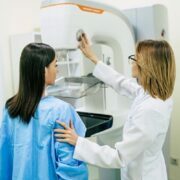Pelvic pain is that feeling of discomfort you experience in your lower abdomen area. The pain can be mild, but you need to seek medical attention as soon as possible when you experience severe pain. OB/GYN physician Peter Khamvongsa, MD, FACOG, FACS, IF is one of the best Miami chronic pelvic pain and minimally invasive surgery specialists who can help diagnose your condition and design the best treatment option.
As a woman, pelvic pain may be a nuisance and indicate some serious complications you might be having. Have a look at these top seven causes of pelvic pain in women.
Table of Contents
Menstrual Pain and Cramps
It is common for a woman to experience pelvic pain while she is on her period. Therefore, you are not alone if you are experiencing menstrual pain and cramping. According to research, all the symptoms associated with menstrual pain are reported by over half of all the women who menstruate.
Camping typically occurs right after you begin your periods due to the uterus’ contraction to shed its lining. The pain you experience can be similar to a jabbing pain or muscle spasm and can be relieved by some over-the-counter medications.
Ovulation
Sometimes you may experience painful sensations in the middle of your menstrual cycle, which can be painful ovulation. During the ovulation process, your ovaries release an egg together with other fluids. If these fluids spread within your pelvic area, they can cause irritation that causes pain. However, the discomfort lasts for a short time and can switch sides depending on the ovary that released the egg.
Urinary Tract Infections or Cystitis
If you have a bacterial infection, it can cause inflammation to your bladder. This is a condition known as cystitis, and it occurs as skin, rectal, or vaginal bacteria finds its way to the bladder through the urethra.
On the other hand, a urinary tract infection is similar to cystitis, only that it can occur anywhere in the urinary system. However, both conditions are not uncommon to women and can be accompanied by pelvic pain.
Sexually Transmitted Disease
If you are experiencing pelvic pain, sometimes it can indicate an underlying sexually transmitted infection such as chlamydia or gonorrhea. However, note that this can only be the case if you are sexually active. Besides pelvic pain, other accompanying symptoms of such conditions include changes in your vaginal discharge, painful urination, and bleeding between periods.
Pelvic Inflammatory Disease
This is a womb infection that can cause damage to the surrounding tissue. It can be caused when bacteria enter the womb from the cervix or vagina and takes hold. It can also be a complication of a sexually transmitted infection. Besides causing pelvic pain, this condition can also increase your infertility risks.
Pelvic Adhesions
If you develop scar tissue in your pelvic area, you can suffer chronic pelvic pain. This scar tissue can result from endometriosis, old infection, or other issues around the pelvic area.
Irritable Bowel Syndrome (IBS)
This is a gut disorder that also leads to pelvic pain besides other symptoms such as bloating, constipation, and diarrhea.
Appendicitis
This is an appendix inflammation caused by an infection. Although common, this condition can be severe, causing a sharp pain in your lower-right abdomen.
If you are experiencing pelvic pain, it could be as a result of the above conditions. Therefore, it could be better if you sought medical attention from the experts. Let the professionals diagnose your condition and give you the care you require.














Comments